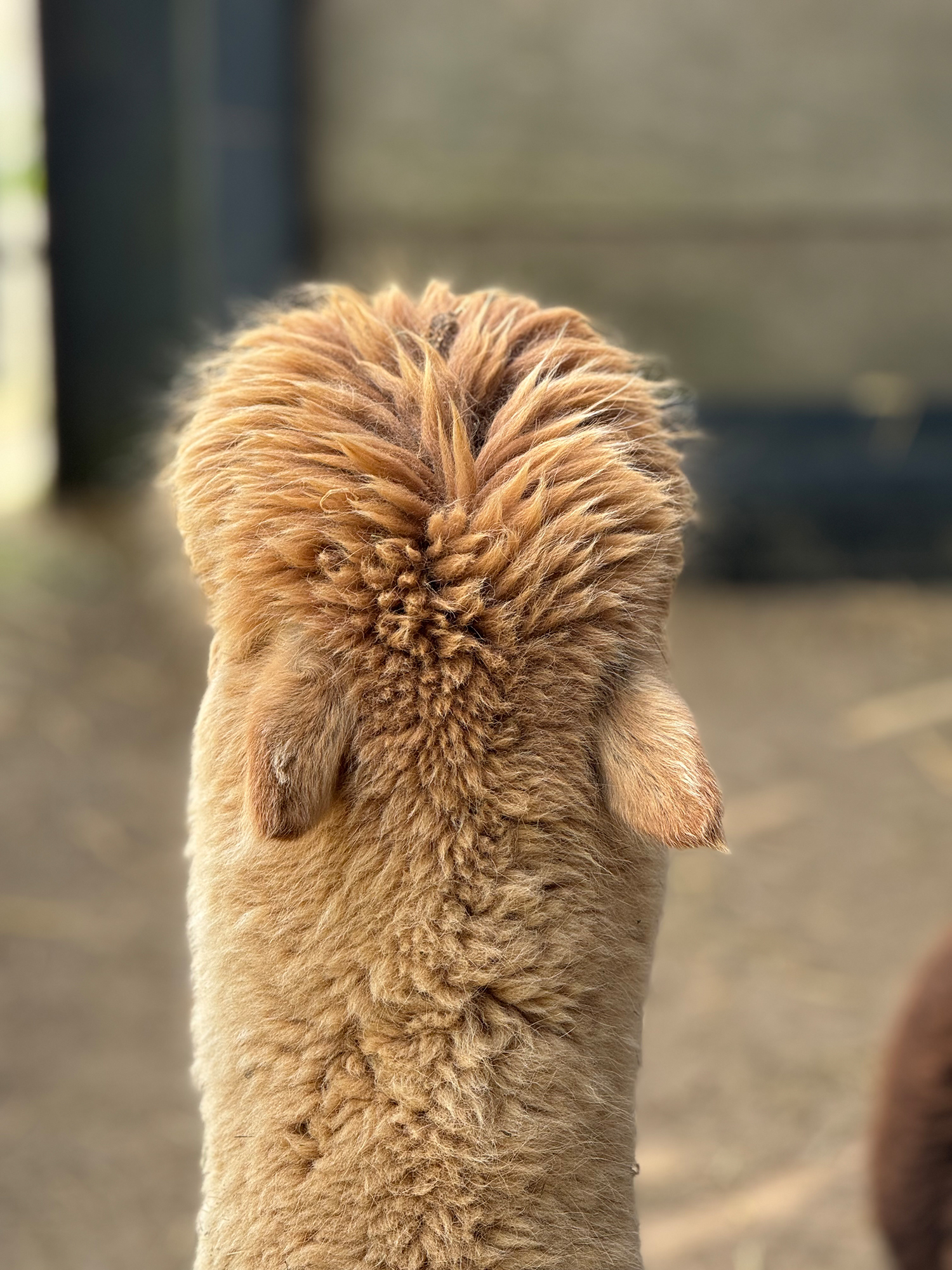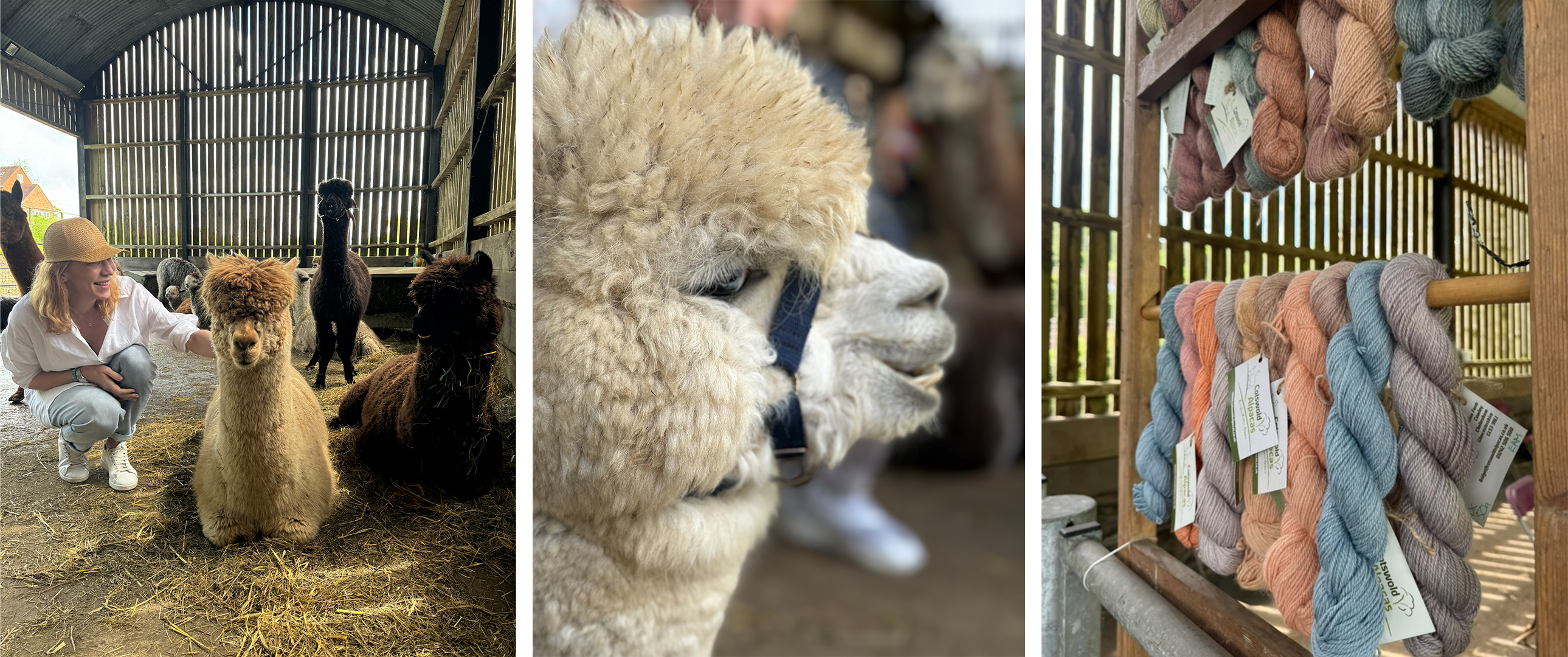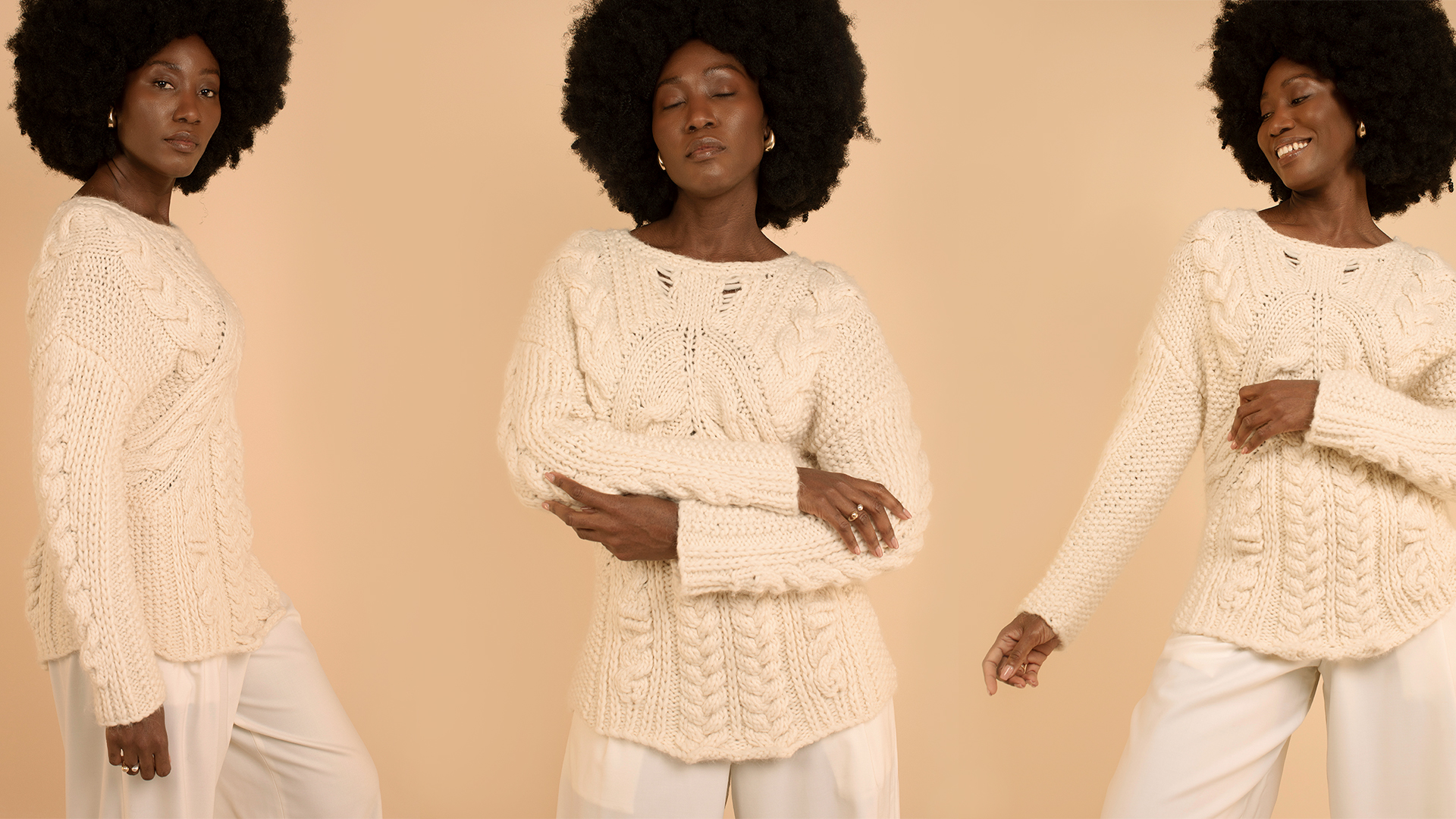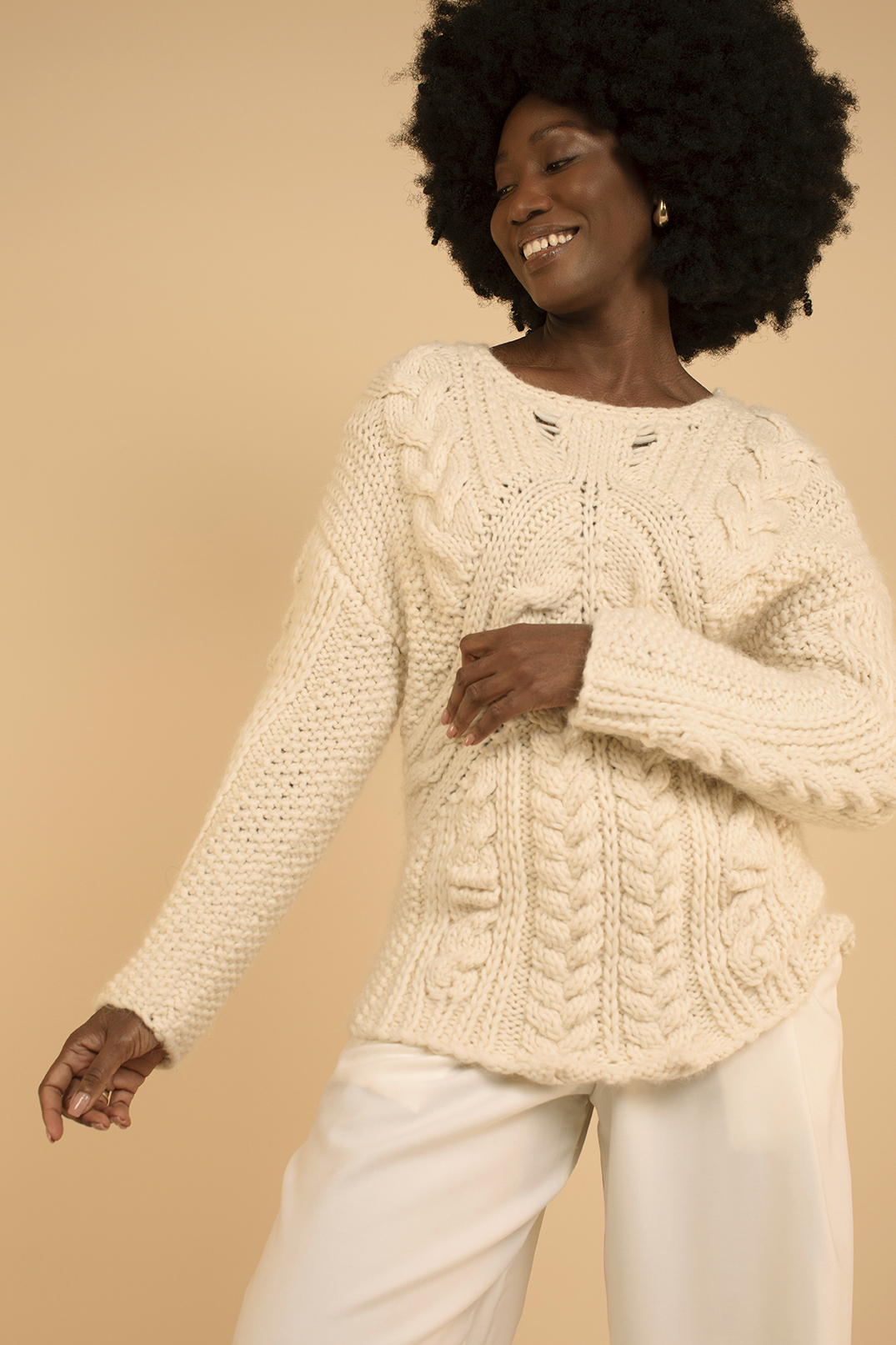From Farm to Fashion: Everything You Need to Know About Alpaca Fibers


A month ago, we visited a fully functioning alpaca farm in the UK, just two hours from London in the picturesque, Instagrammable area of the Cotswolds. It was a magical experience, and I have to say, I’m even more in love with the fibers we've been using for over five years.
Though we mostly source our alpaca yarns from prominent Italian mills, the fibers originate in Peru, a place I've always wanted to visit because of its incredible culture of yarn making. (and not only of course, who doesn't love peruvian food?)
As with many precious fibers like silk, alpaca fibers have been commonly vilified by the fashion industry for the same reasons as silk and wool, in fact it is the second most hated fibre ...Its expensive, its very expensive indeed. As you can already imagine, the claims are mostly invented and very far from the truth, but that doesn't really help selling polyester and nylon, so no surpises here. If you want to read more on the facts you can check this very well-researched article by Prof. Veronica Kassatly
Here are five things you need to know about this incredible fiber that has been around for thousands of years, plus a few little-known facts.
1. What Makes Alpaca Fiber Special?
Alpaca fiber stands out for its remarkable softness, warmth, and durability, making it a prized material in the world of textiles. Often likened to cashmere but with unique advantages, alpaca fiber is like cashmere's tougher cousin. It offers the same luxurious feel against the skin but is less prone to pilling and more resilient over time. Despite its softness, alpaca fiber is incredibly warm. It has excellent insulating properties, which help to regulate body temperature in varying climates. Whether in chilly winters or cool evenings, alpaca garments provide natural warmth without feeling bulky.


How is Alpaca Fiber Collected?
Alpacas are shorn annually, typically in the springtime when their fleece is at its longest and thickest. This shearing process is essential for the welfare of the animals, as it prevents them from overheating during warmer months and ensures their comfort throughout the year. Each alpaca produces approximately 5 to 10 pounds of fiber per year, depending on factors such as genetics, nutrition, and environmental conditions. The quality and quantity of the fiber can vary among individual alpacas and between Huacaya and Suri varieties. Proper care and management of alpacas during shearing are critical to their health and well-being. Stress-free handling and a clean, comfortable environment help minimize any discomfort for the animals and ensure they remain healthy and productive.
3. Why Wear Alpaca? Benefits of Wearing Alpaca Clothing
Alpaca garments feel like wearing a cloud and there are a number of practical benefits: Alpaca fiber is exceptionally soft and smooth, giving you this incredibly luxurious comfort against the skin. Despite its lightweight feel, it provides excellent insulation, keeping you warm in cold weather. The fibers create tiny air pockets that trap heat close to the body, offering natural warmth without the bulk. Alpaca fibres are naturally breathable, allowing air circulation to regulate body temperature and prevent overheating. It also has inherent moisture-wicking properties, pulling moisture away from the skin and releasing it into the air. This keeps you dry and comfortable, making alpaca garments suitable for all-day wear in various conditions. Knitwear made from alpaca is by default more durable and resistant to pilling, maintaining its softness and shape over time. Due to its lack of lanolin, alpaca fiber is hypoallergenic and gentle on sensitive skin, suitable for those with wool allergies.


4. How Alpaca Fiber Compares to Other Natural Fibers
Alpaca is softer, lighter, and warmer than sheep's wool and rivals cashmere for its softness, but it's more durable. Unlike synthetic fibers, alpaca is eco-friendly and breathable, making it a great choice for sustainable fashion. One of alpaca fiber's standout qualities is its durability. Compared to sheep's wool, alpaca fiber is stronger and more resistant to tearing and pilling. This durability ensures that alpaca garments maintain their quality and appearance even after frequent wear. Alpaca is considered a sustainable fiber choice due to several factors; they have a low environmental impact—they graze lightly and efficiently, requiring less water and food compared to other livestock. Additionally, alpaca fiber processing typically uses less energy and chemicals compared to synthetic fibers, reducing its carbon footprint.
5. How to take care of your alpaca sweaters?
Alpaca garments are luxurious and durable, but they require gentle care to maintain their quality and longevity. Hand wash your alpaca clothes in cold water with a mild detergent. Lay them flat to dry, and store them folded with lavender or cedar sachets to keep moths away. This way, your alpaca knitwear will stay soft and beautiful for years.


Little-Known Facts About Alpaca Fiber:
- Natural Color Range: Alpaca fibers come in 22 natural shades, so no need for chemical dyes.
- Sustainability: Alpacas have a gentle environmental impact—they eat less and are easier on the land than other livestock.
- Cultural Significance: Alpacas have been a part of South American cultures for thousands of years, especially in Peru, Bolivia, and Chile
- Fire and Water Resistance: Alpaca fiber is naturally fire-resistant and water-repellent, adding extra perks to its list of benefits.




